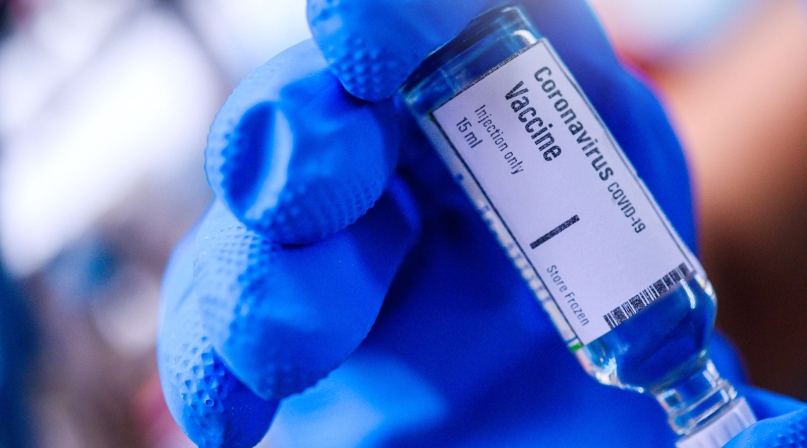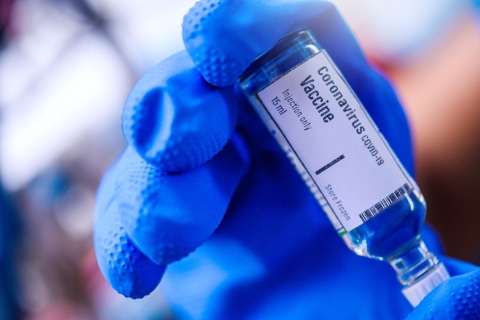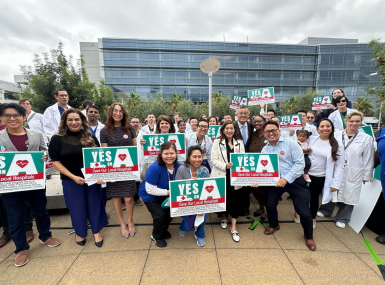Update on COVID-19 Vaccine Development and Distribution
Author

Blaire Bryant
Upcoming Events
Related News

Key Takeaways
On October 6, the Food and Drug Administration (FDA) issued guidance on the conditions under which a COVID-19 vaccine would be granted an emergency use authorization (EUA). The guidance outlines both expectations and guidance for vaccine manufacturers, while also providing the public with an understanding of the process by which the vaccine will be evaluated for authorization or approval. The guidance provides counties with essential information to instill public confidence in a COVID-19 vaccine, which will be critical to the success of any distribution strategy.
Currently, five out of six vaccine candidates are in advanced stage clinical trials. The FDA and vaccine manufacturers are anticipated to expand trials later this year based on the “immune correlates of protection,” or the clinical performance of the vaccine and its ability to provide protection from infection.
While the Trump administration does not currently have a specific timeline for vaccine development, as authorization will depend on data availability as well as the complexity of applications, state and local vaccine distribution strategies are beginning to come together. On October 16, each state submitted the first iteration of its vaccine distribution plans to the Centers for Disease Control and Prevention (CDC). CDC is expected to make executive summaries available for each plan but is unlikely to publish them in their entirety, given their evolving nature (though some states have already put their plans online).
Vaccine distribution is likely to take a phased approach that includes the following steps (for a more detailed explanation of these measures please see NACo’s CDC Playbook Analysis):
- Phase 1: A potentially limited supply of COVID-19 vaccine doses
- Phase 2: Large number of vaccine doses available
- Phase 3: Sufficient supply of vaccine doses for entire population
Counties are integral to the success of each of these phases, given that not only are they responsible for vaccine distribution, but also for leveraging community partnerships to share information and identifying critical populations.
Distributing the vaccine is expected to be resource intensive for state and local governments. Technological concerns are likely to be consistent and may put a financial strain on counties, testing county resources. In addition, most vaccines will require two dosages, meaning tracing at the local level will play a large role in the distribution strategy. While the CDC has provided states with approximately $200 million in planning grants, state health officials have estimated that over $8 billion will be needed in total for planning and distribution efforts.
Confidence in a vaccine will be essential to ensuring equitable and widespread uptake. CDC’s strategy to build confidence in a vaccine takes a three-pronged approach:
- Reinforcing trust by regularly sharing clear and accurate information
- Empowering healthcare providers to recommend vaccination to their patients
- Engaging community stakeholders
The CDC plans to support local, state and regional planning for the successful implementation of a national vaccine distribution program. However, county public health officials must spearhead tailored messaging, community engagement and culturally sensitive appeals at the local level to ensure equitable utilization of the vaccine.
As frontline health care providers, counties are critical to the success of any vaccine distribution strategy. NACo will continue to track and report on new developments regarding COVID-19 vaccine distribution efforts and will work to ensure counties continue to build collaborative partnerships with states and the federal government on this issue.
For more information, visit our resources to aid in the development and implementation of local COVID-19 vaccine programs on our NACO COVID-19 resource hub.

Attachments
Related News

CMS issues new guidance on Medicaid Community Engagement Requirements
On December 8, the Centers for Medicare & Medicaid Services (CMS) released a Medicaid and CHIP Services Informational Bulletin (CIB) directing states on how to implement the Medicaid community engagement requirements enacted under Section 71119 of the One Big Beautiful Bill Act legislation (Public Law 119-21), or H.R. 1.

California county sales tax measure backfills federal healthcare cuts
Santa Clara County, Calif. will raise an estimated $330 million each year from a sales tax to backfill lose Medicaid funding.

